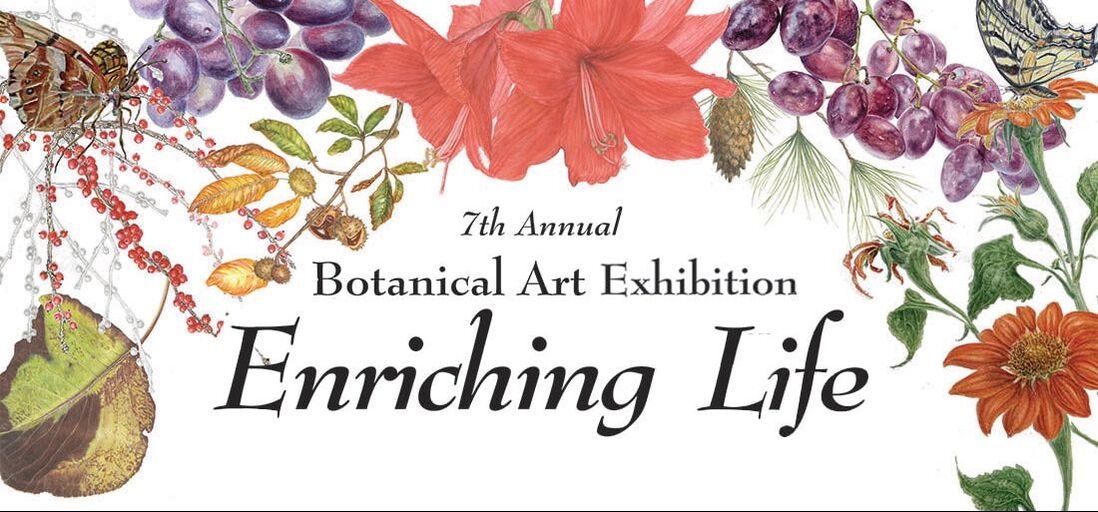 Brushwood Center at Ryerson Woods proudly welcomes back internationally renowned Botanical Artist Heeyoung Kim, accompanied by her students from the Botanical Art Academy, for the Seventh Annual Enriching Life Exhibition. This event showcases carefully crafted pieces spanning different stages of completion, allowing visitors to join in the celebration of an artist's progress and process. Through a dedication to detail, Heeyoung Kim guides her students into creating art with purpose extending beyond their obvious beauty, as they foster a deeper connection with the often overlooked elements of nature. Through this meticulous eye, their pieces highlight the intricacies of our local ecosystems and educate audiences on the importance of each individual species. Heeyoung Kim, a now highly accomplished artist, displayed her first solo exhibition with the Brushwood Center after participating in one of their group shows in 2009. She reflects on her invitation, saying, “that was so exciting, and I was not even ready to have a solo exhibit at that time, but I said YES I’m going to do it, and I felt like that was such a humbling moment. I never even thought of having a solo show!”
These feelings of symbiosis are shared with the center’s leadership, as well. Director of Arts and Administration, Julia Kemerer, remarks, “Heeyoung has been a fixture at Brushwood Center since we first saw her work.” Brushwood’s goals to deepen the public’s connection with the environment and support the health of both people and the planet are actualized with the presence of Heeyoung’s Botanical Art Academy. “The Academy has been one of the cornerstones of Brushwood Center’s programming since it began in 2012,” says Kemerer. Heeyoung’s class provides her students with the opportunity to learn drawing and painting techniques, so they can build a strong foundation as artists, but furthermore, helps them build the confidence necessary to pursue art seriously if they choose. As the majority of her students found their way to art later in their lives, the former business people, lawyers, and doctors may not have labeled themselves as artists prior to showcasing their work. Julia Kemerer says, “One of my favorite things to do as an Art Director is when I get the opportunity to help draw the artist out of someone who does not consider themselves to be an artist. I firmly believe that if the interest and desire to try is there, the artist is there. I know this is a belief that is shared by Heeyoung, and something that can absolutely be seen in her students - a group made up almost entirely of new artists.”  Heeyoung Kim Heeyoung Kim By lifting the veil of exclusivity that often comes when beginning to enter exhibitions, students of the Botanical Art Academy not only reap the mental health benefits that come from the creation process but also gain a rightful sense of pride in themselves and their work. “Enjoying the learning process enriches their life already, but having an opportunity to exhibit at Brushwood Center helps them feel more accomplished and gives them a sense of confidence, too. Once their works are displayed on the wall, they are not 'shy students' anymore. They are ready to step forward in front of the public and share their new passion. That is probably the proudest moment for all teachers, including me,” Heeyoung says. This accomplishment is accompanied by a furthered sense of purpose, knowing that their art contributes to the education and conservation of our local ecosystems– exemplifying how focusing on the enrichment of an individual can directly impact our communities. Nature reflects a similar notion– where the survival of an entire ecosystem could rely on the presence of a singular species. The significance of an individual’s success could ripple through the ecological community. Heeyoung recognizes that each plant has a story to tell, which is why she takes care to show every part of the plant in striking detail and with true accuracy. This defines her work as genuine botanical art, which she describes as, “the convergence of art and science.” While many artists focus on the beautiful parts of flowers, she makes sure to prioritize every leaf, seed, and bud of plants, both common and rare, for accurate scientific documentation.
Heeyoung’s role in conservation is a unique one. She commends traditional conservationists and volunteers as heroes; working hard, often behind the scenes to maintain our environments, but notes that their work is often disconnected from the general public. We frequently hear about habitat destruction and decreasing biodiversity in places like the Amazon Rainforest, but “ordinary people are not always aware of this hazardous situation here and now, in our own neighborhoods, so that was the beginning of my attempt to paint them to show people that there are endangered flowers and plants here too,” she says. Her art engages audiences with the intricacies and fragility of nature within our backyards, and by teaching others the techniques of botanical art, her impact grows exponentially as their art can begin to do the same. “In addition to shining a light on the students’ inner artists, the Botanical Art Academy is also shining a light on nature, reminding us to take notice of each little piece of our ecosystem and celebrate it. It’s all there – we just have to look. It’s a beautiful reminder,” states Julia Kemerer. Taking the time to teach and uplift artists can undoubtedly impact individuals positively, and their communities consequently. Similarly, raising awareness for the importance of an individual species’ success can benefit an ecosystem as a whole. Brushwood Center in and of itself mirrors a similar function. Separate from their Botanical Art Academy, Brushwood works to provide access to art and nature for those who belong to frequently disenfranchised groups and some who otherwise might not have the chance to experience our natural world at this scale. This opportunity creates room for immeasurable impacts on both that individual and subsequently, the impact they could have, fueled by their newfound passions for art and nature. The Enriching Art Exhibit stands as an annual reminder to honor the progress one can make when they put energy into themselves and take care to notice the often overlooked things around them. Please join us in our celebration of art and nature now through April 24, 2022. Written by Mackenzie GovettMackenzie is a graduate of LSU’s College of the Coast and Environment, contributing to climate responsibility through writing.
0 Comments
The Youth Ambassadors from our Collaborative Conversation: Anti-Racism & the Environment Series have put together facts they’ve learned about environmental justice issues in Lake County that they want everyone to learn about! Our students are spending April and May increasing youth awareness and involvement in fighting these issues. Learn more, share on social media, and contact your elected officials by visiting bit.ly/CEJAYouthActions, or following Brushwood Center’s Facebook and Instagram pages
Brushwood Center worked with Colunga, a long-time community advocate who leads the Round Lake Bilingual Parent Advisory Committee, to facilitate a free, virtual bilingual Bird Camp for 20 Round Lake students through a pilot program with Environment for the Americas and the USDA Forest Service International Programs. The camp connected participating Latinx students with ornithologists and bird guides in Central and South America.
“By partnering with local teaching artists and community leaders, we aim to provide our students with the tools they need to navigate mental health crises, as well as help them recognize the power they already have to solve the complex issues facing our communities and environment,” Abboud added. These activities include poetry, visual arts, and digital artwork created through open-source coding platforms. Students will create a final project that explores their journey with stress, what gives them hope, and what they want to change as our future leaders. Thanks to support from Illinois Humanities, Brushwood Center commissioned ethnographer Carla Aldana and illustrator Janet McDonnell to document stories of community resilience in Lake County. The above illustrations feature the story and perspective of Maria Colunga.
In honor of National Bison Day, contributing author Isabelle Cadrot interviewed Joseph Standing Bear Schranz, President of the Midwest SOARRING Foundation, for this feature on the cultural significance of bison in indigenous culture. National Bison Day is commemorated annually on the first Saturday of November to celebrate the cultural, economic and historical significance of bison. Photography by Lynn Anderson. Midwest SOARRING (Save Our Ancestor's Remains & Resources Indigeneous Network Group) Foundation has been growing its own bison herd since 1999 when the organization saved a four-year-old female bison named “Broken Horn” from slaughter. Midwest SOARRING Foundation is a Native American organization founded in 1996 to repatriate indigenous remains and resources, protect sacred sites, educate the public, and build community with all people around indigenous cultures. More bison were donated and saved from the butcher, and thanks to breeding, the herd has grown to several dozen animals. The herd is currently located on a Midwest SOARRING Foundation member’s farm in LeRoy, Illinois, where they are free to roam 30 acres of fenced land. Several tribes across the country support bison herds for food and ceremonial purposes, but Midwest SOARRING Foundation President Joseph Standing Bear Schranz, Ojibwe, has always envisioned keeping these bison as a “spirit herd” never to be used for consumption. In an October interview with Brushwood Center, Schranz said he sees the creation and preservation of the herd as a way to honor the bison “for everything they did for our people.” Bison are a symbol of endurance and strength for native peoples and Schranz believes herds like this are symbolic of native people’s survival in a world when the odds are often stacked against them. The American Bison, America’s largest land mammal, was so abundant before Europeans colonized North America that experts estimate they numbered 30 to 70 million. To many Native American tribes, the bison was a spiritual symbol and essential resource for food, clothing, tools, and shelter. Once the United States was founded and expanded over the continent, native peoples were forced from their ancestral lands onto reservations and were killed by conflict and disease. Their story mirrored that of the bison, which suffered from diminished habitat, mass slaughter for their hides and pelts, and exposure to diseases introduced by cows. By the late 1800s, bison were on the verge of extinction with only a few hundred animals remaining in the United States. Without this source of livelihood, many Native American tribes were more easily confined to reservations. Despite the attempts to erase them, native peoples and the bison survived, and there are efforts underway to reintroduce bison back to the landscape and into the lives of native peoples. Midwest SOARRING Foundation is determined to honor this ancient connection and restore hope in a future where all people are more connected with the natural world. “If we can make some bison survive, we have a chance to, as well. It's a spirituality thing between us and the four-leggeds. I think it's really important that we protect them, and I've tried my very best,” expressed Schranz. Schranz described how the decimation of tribes has left scars on native people, who experience poverty and unemployment at rates much higher than the national average. Native peoples also suffer from higher than average school drop-out, addiction, and suicide rates. Access to quality housing and healthy food can be limited, with gas stations often being the only option for buying food on reservations – a contributing factor to the high diabetes rate among Native Americans. This is an especially personal issue for Schranz, who struggles with diabetes himself. Schranz believes the lack of good nutrition in native communities is part of a greater societal disconnect from food, and he thinks the Midwest SOARRING bison give people of all backgrounds an opportunity to examine their relationship with the animals that feed us. Before the Covid-19 pandemic, Midwest SOARRING took visitors on wagon rides to connect up-close with the bison and the wild origins of food. Referencing our fast-food culture, Schranz explains, “The loss is that you don't see what that animal had to do to give its life for you. You don't see the spirit of the animal. So, I encourage people when they’re with us to look into the animal’s eyes and appreciate what they're going through in order to make you survive.” Bringing bison back is not only a symbol of hope for Native Americans and an opportunity for people to connect to the natural world, but it is important for rebalancing native ecosystems. Despite bisons’ thundering size, they have a lesser impact on the native environment than their bovine cousins, cows. Unlike cows, bison are native to North America and evolved a unique relationship with the continent’s grassland ecosystems. Schranz says that bison do not eat native grasses down to the roots like cows do, which allows native grasses to more easily regrow and leads to a much lighter impact on the land. Restoring these animals to the land has many tangible benefits for people and the environment, but caring for a bison spirit herd has its own challenges. The farm where the bison currently live is up for sale, and Midwest SOARRING Foundation is searching for the herd’s next home. Unfortunately, the spirit herd has been a hard sell for some tribes and organizations that cannot commit to leaving the herd as a spirit herd and want the option of using the bison for food. Transporting the bison is also challenging, because the equipment needs are costly. Midwest SOARRING is fundraising to cover these expenses and remains hopeful that the bison will find a lasting home. The herd has given Schranz hope for a future where all people are more interconnected with the circle of life and appreciate the richness different people and creatures bring to our world. He is excited to continue Midwest SOARRING Foundation’s bison restoration in the future and has exciting plans to build a cultural center to celebrate native lifeways, build community, and provide a home to more bison. Schranz expressed, “I often tell people I don't care where you're from. There's no more important thing you can do than create a healthy thriving community.” If you would like to learn more about or support the Midwest SOARRING Foundation, Joseph Standing Bear Schranz, and the organization’s work with bison, please visit https://www.midwestsoarring.org/index.html . Many thanks to Joseph for generously sharing his time and story. RIVERWOODS, IL -- Brushwood Center at Ryerson Woods welcomed honorees Bill McKibben and Sue Halpern to the 37th Annual Smith Nature Symposium Awards Ceremony, live-streamed at 7 p.m. on Friday, October 9th.
“Sue Halpern and Bill McKibben have helped shape one of the largest grassroots environmental movements of the 21st century and they are inspiring people around the world to take a stand for the environment and climate justice. This is a critical moment requiring thoughtful action to move our society toward more just and sustainable solutions and Brushwood Center is thrilled to honor Bill and Sue’s work in this pursuit,” said Gail Sturm, Chair of the Brushwood Center Board of Directors. Brushwood Center bestowed the Environmental Leadership Award to Halpern and McKibben, a couple that has influenced millions of young people through their powerful writing and activism on behalf of nature, democracy, and the climate. Brushwood Center also welcomed environmental allies and Masters of Ceremonies Bill Kurtis and Donna La Pietra, live-streamed from their treehouse, to facilitate conversation with the honorees. The program featured guest appearances from previous honorees, including Robert Redford, Sibylle Szaggars Redford, Amory Lovins, and Judy Hill Lovins. The Symposium included a special musical performance as a tribute to nature during COVID-19 by Multi Grammy Award nominee and violinist Philippe Quint and former “Chicagoan of the Year in Classical Music” Vladimir Kulenovic. It was performed directly from Brushwood Center at the heart of Ryerson Woods as a calming tribute to nature in the midst of COVID-19. The Distinguished Environmental Leadership Award was first presented in 1984 to Roger Tory Peterson, the esteemed American naturalist, ornithologist, artist, and educator. In 2019, Amory Lovins and Judy Hill Lovins were recognized for their commitment to a low-carbon energy future and for using their art to inspire people to be environmental stewards. In 2018, the award was presented to Robert Redford and Sibylle Szaggars Redford for their lifelong devotion to land preservation and climate change work. The Smith Nature Symposium memorializes the significant civic legacy of Hermon Dunlap and Ellen Thorne Smith, who donated their land and cabin to help form Ryerson Woods. The Awards Ceremony was the culmination of a seven-part live-streamed series on critical environmental issues that examined how we can shape a more just, sustainable future in the face of the COVID-19 pandemic and growing climate crisis. This series was also a celebration of nature, arts and individuals who make extraordinary contributions to environmental conservation and deepen understanding of and appreciation for the natural world. All funds raised from the Symposium directly supported Thrive Together, Brushwood Center’s COVID-19 crisis response for a more just and sustainable future. Visit www.smithnaturesymposium.org to learn more about the 2020 Smith Nature Symposium series. BIOGRAPHIES: Bill McKibben is an author, environmentalist, and founder of 350.org, the first planet-wide, grassroots climate change movement, which has organized twenty thousand rallies around the world in every country save North Korea. He is the recipient of the Right Livelihood Prize, Gandhi Prize, Thomas Merton Prize, and a fellow of the American Academy of Arts and Sciences with honorary degrees from 18 colleges and universities. McKibben’s 1989 book The End of Nature is regarded as the first book for a general audience about climate change, and has appeared in 24 languages; he’s gone on to write a dozen more books. Foreign Policy named him to their inaugural list of the world’s 100 most important global thinkers, and the Boston Globe said he was “probably America’s most important environmentalist.” Sue Halpern is a contributing writer at The New Yorker, The New York Review of Books, The New York Times, and Rolling Stone covering science, technology, and social issues. She is the author of seven books, including Four Wings and a Prayer: Caught in the Mystery of the Monarch Butterfly, which was made into an Emmy-nominated film. She is a scholar-in-residence at Middlebury College, where she serves as Director of the program in narrative journalism. Halpern was a columnist for Mother Jones, Ms., and Smithsonian Magazine. She has been the recipient of Guggenheim and Echoing Green Fellowships, and earned BA from Yale University and a doctorate in political theory from Oxford University, where she was a Rhodes Scholar. Culinary Love: Cooking for You and the Planet at Brushwood Center’s Smith Nature Symposium10/3/2020 RIVERWOODS, IL -- Brushwood Center at Ryerson Woods welcomed endocrinologist Dr. Disha Narang from Northwestern Lake Forest Hospital, dietitian Monica Joyce from Northwestern Lake Forest Hospital, and chef Catherine O’Meara of Heller Catering to Culinary Love: Cooking for You and the Planet at The Smith Nature Symposium.
This virtual cooking program took place on October 3rd. It was a special addition to a seven-part live-streamed series on critical environmental issues, which culminated in the October 9th Awards Ceremony honoring environmental leaders Bill McKibben and Sue Halpern. In previous years, Smith Nature Symposium guests would gather in person for the Awards Ceremony dinner at Brushwood Center, but this year, registrants gathered around Brushwood’s virtual table and prepared a delicious plant-based dinner from home. “Food is such an essential part of eating well and feeling well, especially right now. Cooking together, even while physically apart, cultivates a sense of community. This expert team of presenters focused on plant-based eating using a recipe that was good for both our bodies and the environment,” said Catherine Game, Executive Director of Brushwood Center at Ryerson Woods. Brushwood Center teamed up with Dr. Narang, Joyce, and Chef O’Meara to bring this live demo and discussion to Symposium participants. Narang and Joyce shared the many health benefits of plant-based eating, and Chef O’Meara demonstrated the featured recipe with step-by-step instructions. Dr. Narang, an endocrinologist at Northwestern’s Lake Forest Hospital, specializes in diabetes and metabolism and understands the importance of healthy eating in preventing chronic disease. Dr. Narang graduated from the Vanderbilt University School of Medicine and completed her residency and a subsequent fellowship at the University of Chicago. Joyce, who works in an Endocrinology Practice at Northwestern Medicine in Lake Forest, has a long history of battling diabetes in the Chicagoland area and works to educate people about the importance of exercise and eating well. Joyce has over 47 years of experience as a registered dietitian nutritionist and is the founder and Executive Director of Slam Dunk for Diabetes, a basketball camp for children with Type 1 and Type 2 diabetes to have fun and learn how to manage their health. This free camp, which has locations in Illinois, Indiana, Wisconsin, Kentucky, and Puerto Rico, was founded with assistance from the Chicago Bulls. Due to her work with Slam Dunk, Joyce was selected by the American Academy of Foods and Nutrition to be a part of a video series called Heroes: Showcasing the Registered Dietitian. The American Academy of Foods and Nutrition and the American Association of Diabetes Educators also recognized her nationally for her dedication to helping children with diabetes. Chef O’Meara, owner of Heller Catering in Lake Bluff since 2001, led the cooking instruction for this program. Her cooking philosophy centers on buying local ingredients, which is more sustainable for the planet and healthier for the consumer. O’Meara shared how to combine such local ingredients into a delicious plant-based meal for Smith Nature Symposium Awards Ceremony. All funds raised from the Symposium directly supported Thrive Together, Brushwood Center’s COVID-19 crisis response for a more just and sustainable future. All presentations were available in English and Spanish. Visit www.smithnaturesymposium.org to learn more about the 2020 Smith Nature Symposium series. Vladimir Kulenovic Joins Brushwood Center at Ryerson Woods as Director of Music and Wellness9/28/2020 dRIVERWOODS, IL – Brushwood Center at Ryerson Woods welcomes Vladimir Kulenovic as Director of Music and Wellness. Kulenovic has served as Music Director of the Lake Forest Symphony and his previous accolades include “Conductor of the Year” by The Illinois Council of Orchestras, “Chicagoan of the Year in Classical Music” by The Chicago Tribune, and winner of The Sir Georg Solti Conducting Award.
Kulenovic will lead the Brushwood Center’s new Music and Nature initiative, opening the power of music as an artistic outlet, a means of connecting to the natural world, and a pathway to healing amidst the Covid-19 pandemic. “The source of music is to be found in nature, and therefore all of our work as musicians is an inseparable extension of nature. To work at Brushwood is to work closest to this source, and to share a purposeful journey with admirable colleagues who inspire creativity and joy! Together, we bring music and nature together to those who need it most,” expressed Kulenovic. Kulenovic was featured in a special virtual musical performance with Multi Grammy Award nominee and violinist Philippe Quint at Brushwood Center’s culminating Smith Nature Symposium Awards Ceremony on October 9th. These two artists performed a rendition of Jules Massenet’s soulful “Méditation” from the opera Thaïs, a beautifully passionate piece in which a solo violin takes the main stage. It was performed directly from Brushwood Center at the heart of Ryerson Woods as a calming tribute to nature in the midst of COVID-19. “Vladimir is an internationally-renowned musician and conductor, and we are beyond thrilled that he will be leading Brushwood’s music and nature initiative. It is a gift to work in concert with such extraordinary talent, and together, we can merge the restorative experiences of music and nature for the public,” said Catherine Game, Executive Director of Brushwood Center at Ryerson Woods. Kulenovic, a Serbian native who came to the U.S. when he was 12 years old, has developed into one the finest and most imaginative conductors of his generation. In his fifth season as the Music Director of the Lake Forest Symphony (LFS), Kulenovic energized unprecedented growth in the symphony’s 60-year history, earning the orchestra a Grammy Nomination for their first-ever commercial CD recording “Liquid Melancholy” (2018 Cedille Records). Before his highly successful leadership at the LFS, Kulenovic was the Associate Conductor of the Utah Symphony at the Utah Opera and Assistant Conductor of the Chicago Lyric Opera. Kulenovic has been featured as a guest conductor across the United States and for dozens of symphonies in Europe and Asia. Notably, he served as principal conductor of the Kyoto International Music Festival in Japan. Kulenovic earned his graduate diploma in conducting from both The Juilliard School and the Peabody Institute. Kawai Pianos and Family Pianos Co. are Brushwood Center’s featured sponsors for the new music and nature program, and they have generously underwritten the Center’s new pianos, which will be housed at Brushwood and used for live-streamed music programs like the Smith Nature Symposium. Brushwood Center is thrilled to be partnering with such charitable sponsors that share the center’s enthusiasm for bringing music to the community. RIVERWOODS, IL -- Brushwood Center at Ryerson Woods welcomed speakers Bill Sturm, Maria Smithburg, and moderator Dr. Martha Twaddle to Healing Spaces at The Smith Nature Symposium.
This conversation examined how we can improve human wellbeing through natural design in our personal and shared spaces. Nature should not solely exist in our forest preserves and parks, but in our homes, businesses, and communities, as natural elements create conditions for good physical and mental health. These health and design leaders came together to share why and how we should incorporate healing natural features into our daily lives and society at large. “People have always needed nature to grow and to heal, but natural design is even more vital in this new era of Covid-19 where people are suffering from illness, isolation, and economic and emotional hardship. We greatly appreciated these leaders’ insights into how we can use natural elements to improve our wellbeing,” said Catherine Game, Executive Director of Brushwood Center at Ryerson Woods. Dr. Martha Twaddle is a national leader in the care of the seriously ill and their families and has been a major contributor to the study and implementation of end-of-life care for more than 30 years. She believes that despite all its advances, modern medicine misses the key objective in caring for patients by curing instead of healing. Modern Medicine too often cures ailments by prescribing remedies to one affected area of the body, instead of treating the body, psyche, and soul as a whole and guiding people towards a healing that brings peace in any stage of illness or recovery. From her own experience and research, Dr. Twaddle has come to believe that gardens are powerful tools in furthering healing that are not employed to their greatest capacity. Gardens are particularly effective healing tools because they respond to the fundamental human need for beauty, serenity, community, physical movement, sensory stimulation, and the opportunity for reflection. This intersection of life that gardens represent helps us to make sense of suffering and come to peace with the cycles of life we experience. Pain, depression, and the agitation of dementia have been shown to lessen with horticulture therapy and images of nature in hospitals can decrease anxiety and improve the ability to cope with pain. While promoting these healing benefits of gardens, Dr. Twaddle advances academic work, including developing curriculum, guidelines, and models of care for healthcare professionals to provide care for the seriously ill in all settings. She also works with others at Northwestern Feinberg School of Medicine exploring how technology and prescriptive nature can improve health outcomes, as well as collaborating nationally in the development of patient and family-centered quality metrics. In 2013, she was named one of the 30 most influential visionaries in Hospice and Palliative Medicine by nomination of her peers via the American Academy of Hospice and Palliative Medicine. Gardens are beneficial for all people, not only the sick and suffering. Designing gardens and incorporating them into our physical environment in a way that invites all people and flows with built surroundings is the job of architects and landscape designers. Bill Sturm, cofounder of Serena Sturm Architects, Ltd., is a recognized leader in environmentally sustainable and resource-efficient architectural design and land planning. His practice helped pioneer ecological design in Chicagoland and his firm has managed numerous award-winning projects. Over Sturm’s 40-year career, he has established a reputation for delivering buildings that meld functionality with beauty and connect the outdoors to the indoors. Sturm has lectured extensively on sustainable design, juried multiple professional awards, and has been featured on the radio, TV, and in print. He is a member of The American Institute of Architect’s (AIA) National Energy Leadership Group and served as the 2014 Chairman of AIA’s National Committee on the Environment Advisory Group. In this position, he advanced the profession’s practice of project performance analysis and strengthened adoption of the AIA 2030 Commitment, which challenges the global architecture and building community to make all buildings carbon-neutral by 2030. While Sturm primarily uses his architectural expertise to design green buildings for people to live and work in, Maria Smithburg (landscape architect and owner of her own practice, Artemisia), focuses on creating inspirational outdoor spaces by using plants as a living medium. Smithburg’s interest in art and her architectural background allow her to better understand the relationship between buildings and open space within an artistic context. This artistic side gives her an intuitive ability to unify the garden style to that of the built environment. Smithburg’s enchanting outdoor spaces invite a sense of tranquility that makes it easy for visitors to be present in the moment. Part of the magic of Smithburg’s highly admired residential, commercial, and public gardens is that she uses plants as an ever-evolving tool that shape the landscape and change it over time. Her gardens go through transitions with the seasons and years – just as humans do – and she must visualize these transformations years in advance. Smithburg has been running Artemisia since 1992 and works on gardens in the Chicago area, as well as in Harbor County, Michigan. Her academic pursuits involve previously teaching landscape design theory at the University of Illinois in Chicago and garden design courses at the Chicago Botanic Garden. She received her Bachelor of Architecture from the University of Buenos Aires and her Masters in Landscape Architecture from Harvard University. She currently serves on The Cultural Landscape Foundation’s Stewardship Council where she extends her passion for connecting people to natural places. All funds raised from the Symposium directly support Thrive Together, Brushwood Center’s COVID-19 crisis response for a more just and sustainable future. All presentations were available in English and Spanish. To learn more about the series visit www.smithnaturesymposium.org. RIVERWOODS, IL -- Brushwood Center at Ryerson Woods welcomed speakers Celeste Flores and Dulce Ortiz to Environmental Justice in Lake County at the Smith Nature Symposium.
This conversation, part of a seven-part live-streamed series on critical environmental issues, examined environmental injustices in Lake County that disproportionally affect people of color and immigrant families and offered a vision of how to secure environmental, economic, and racial justice for these communities. Flores and Ortiz are Co-Chairs of Clean Power Lake County, a community-driven coalition that organizes within frontline environmental justice communities to shift the county to healthy, sustainable, and renewable energy. This assembly of partners includes faith-based, environmental, and public health organizations working to achieve self-determination for vulnerable and underserved people. As leaders spearheading this local movement, Flores and Ortiz offered perspective on the current state of environmental justice in Lake County and shared their understanding of the progress that has yet to be made. “The fact is that pollution does not affect all people equally in the United States, and certainly not in Lake County. Communities comprised largely of people of color, immigrants, and low-income households are more likely to be closely located to pollution sources, such as ethylene oxide and coal-fired power plants, than other portions of the population. Historically, these community members have been excluded from decision making and policymaking, and that is something that must change,” said Flores, Co-Chair of Clean Power Lake County. She is also the Lake County Outreach Director for Faith in Place, an organization that empowers people of all faiths to care for the Earth. Flores, the daughter of immigrant parents, was born and raised in Lake County, Illinois. She first became involved in environmental justice as a student at Bellarmine University in Kentucky, where she saw the devastation of mountaintop removal, a highly destructive mining practice. After graduation, she spent a year as an AmeriCorps volunteer in Appalachia. She then returned to Lake County where she learned about local environmental justice efforts of Clean Power Lake County to ensure the city of Waukegan a just transition away from its decades-old coal-fired plant. Flores has been a lifelong member of the Most Blessed Trinity Parish, and in 2017, she was awarded The Gaudium et Spes Award by The Consejo Hispano Arquidiócesis de Chicago (Archdiocese of Chicago) at the Noche de Gala, an annual dinner recognizing leaders in Hispanic ministry. Flores’s leadership has been recognized nationally, and she was Senator Tammy Duckworth’s guest for the State of the Union in 2020. Securing a just and sustainable energy transition for all is already challenging, but it will be even more difficult because climate change is due to disproportionally impact environmental justice communities. Climate change is a threat multiplier, meaning it aggravates existing stressors, including pollution, health risks, flooding, droughts, poor infrastructure, and political instability, which unequally affect underserved communities. With the looming threat of climate change, transitioning Lake County to renewables does not necessarily ensure all people benefit equally. Careful government planning and community involvement at the local level is key to remedying current disparities and insuring they do not persist. Clean Power Lake County believes grassroots involvement from environmental justice groups is essential in this process and that government must actively seek these communities’ input. When the Waukegan coal plant is ultimately retired, for example, the plan should include a fair transition for plant workers and the community, so people’s livelihoods do not suffer and residents are not left to clean up residual pollution. Though the task of creating a just future for all is daunting, it’s important to start with small steps at the community level that ripple into greater impacts and empower people to live healthy, happy lives. Dulce Ortiz (originally from Mexico City, Mexico) helps immigrant families be fully informed and participating members of the community as Co-Chair of Clean Power Lake County and Executive Director of Mano a Mano. Mano a Mano is an agency that serves the growing Lake County immigrant community through health resources and services, educational classes, and immigration legal services. Often, immigrant families struggle to integrate and advocate for themselves because they lack the necessary language skills, information, and connections to navigate the American job market, schools, and complex health system. Ortiz leads the Mano a Mano team in planning and programming community engagement that builds human dignity and teaches people the skills they need to advance their well-being despite prevailing inequalities. She also plays a key role in the development of strategic community partnerships and leads the Mano a Mano’s policy-advocacy agenda. Ortiz is an advocate with a deep understanding of community needs, and she uses her expertise to help immigrant families better integrate into American life. All funds raised from the Symposium directly supported Thrive Together, Brushwood Center’s COVID-19 crisis response for a more just and sustainable future. All presentations were available in English and Spanish. To learn more about the series visit www.smithnaturesymposium.org. Brushwood Center at Ryerson Woods welcomed speakers Craig Sieben, Kelly Shelton, Jen Walling, and moderator John Wasik to Renewable Energy Surges, the fourth panel in this year’s Smith Nature Symposium. This roundtable, part of a seven-part live-streamed series on critical environmental issues, explored the future of renewable energy in Illinois and the positive impact a clean energy transition would have on climate change and existing environmental inequities linked to fossil fuel pollution. These top energy consultants, policy leaders, and government officials shared their perspectives on the state of the private and public energy sector, current incentives to transition to renewables, and policy needs as we aim to build a cleaner future for our communities and the planet. “We are excited about the current enthusiasm and political will behind a renewable energy transition in Illinois. It’s crucial to improve the health of our environment, maintain a robust economy, and ensure all people’s well-being,” expressed Catherine Game, Executive Director of Brushwood Center. Over his 35-year career in energy efficiency, Craig Sieben has witnessed a significant transformation of the industry to one that increasingly values clean power. Since founding Sieben Energy Associates in 1990, Sieben has guided individuals and organizations in energy resource optimization and now uses his expertise to direct energy strategies at AECOM during this continued period of rapid industry change. Kelly Shelton, President of Shelton Solutions, Inc., also witnessed this important shift in the sector over her more than 25-year-long career providing energy consulting services to Chicagoland. Shelton Solutions currently provides energy audits and energy modeling on behalf of the State of Illinois, and Shelton’s previous clients include the City of Chicago, Chicago Transit Authority, Chicago Public Schools, and Cook Country. In guiding one of the largest cities, public school networks, and counties in the United States to greater energy efficiency, Shelton demonstrated that simple restructuring of energy portfolios provides a significant return on investment in energy and cost savings for even the most complex of organizations. Consultants’ work is key to restructuring the energy portfolios of organizations, governments, and businesses from within, but applying external pressure to government is also necessary to push society towards a future powered by renewables. This is precisely what Jen Walling, Executive Director for The Illinois Environmental Council, does as she lobbies government decision makers on environmental issues. Jen has directed The Illinois Environmental Council since 2011 and drafted, negotiated, lobbied, and passed hundreds of bills in Springfield while working to build the power, expertise and relationships of the region’s entire environmental community. Recently, as a steering committee member of the Illinois Clean Jobs Coalition, Walling pushed hard for Illinois to ratify the Clean Energy Jobs Act, which aims to put Illinois on a path to 100% renewable energy by 2050, lower energy costs for consumers, and create new job opportunities. This would improve people’s livelihoods across the state and would be particularly positive for communities of color that are often more closely located to coal-fired electricity plants than other portions of the population. Moderator John Wasik, Commissioner of the Lake County Board, also has a direct role in local government and uses his position as a public servant to advocate for a smaller county carbon footprint and the careful stewardship of community resources. Wasik pushes for greater energy efficiency as Chair of the Forest Preserve’s Planning Committee and Vice Chair of the Lake County Energy and Environment Committee. For Wasik, greening Lake County means preserving it for future generations by protecting the environment, creating good-paying jobs, and lowering government operating expenses. He has authored 18 books, spoken all across North America and contributed to The New York Times, Forbes, The Wall Street Journal, and other national publications. This year’s Smith Nature Symposium is virtual for the first time, which presents an exciting opportunity for Brushwood Center to reach as many people as possible with these timely discussions. Ticket prices are “give what you can” with a free option available for students and those who are unable to donate. The series began on August 13th and culminates in the Smith Nature Symposium Awards Ceremony on Friday, October 9th, with honorees Bill McKibben and Sue Halpern and Masters of Ceremonies Bill Kurtis and Donna La Pietra. All funds raised from the Symposium directly supported Thrive Together, Brushwood Center’s COVID-19 crisis response for a more just and sustainable future. All presentations were available in English and Spanish. To learn more about the series visit www.smithnaturesymposium.org. |
AuthorThis blog is written by the staff and partners of Brushwood Center at Ryerson Woods Archives
February 2022
Categories |
|
21850 N. Riverwoods Rd.
Riverwoods, IL 60015 224.633.2424 [email protected] ABOUT BRUSHWOOD BECOME A PARTNER VOLUNTEER AND JOB OPPORTUNITIES |
Brushwood Center at Ryerson Woods is committed to enabling the participation and enjoyment of our programming and events for all visitors. At Brushwood Center, you will have open access to accessible parking and entrance to the house, a gender neutral bathroom, and changing tables.
If you require certain accommodations in order to observe or attend our events, or have questions regarding accessibility of our facilities, please contact our Director of Public Programs and Music, Parker Nelson, at [email protected] or at (224) 633-2424 ext. 1. Programming and events at Brushwood Center are available to everyone, including but not limited to age, disability, gender, marital status, national origin, race, religion, and sexual orientation. Site Photography by: In Life Photography, Michael Kardas Photography, Ewa Pasek Photography, Brushwood Staff, and Josiah Shaw Productions |
OPEN TO THE PUBLIC Monday - Thursday & Saturday: 10am - 3pm Sunday: 1pm - 3pm and by appointment |







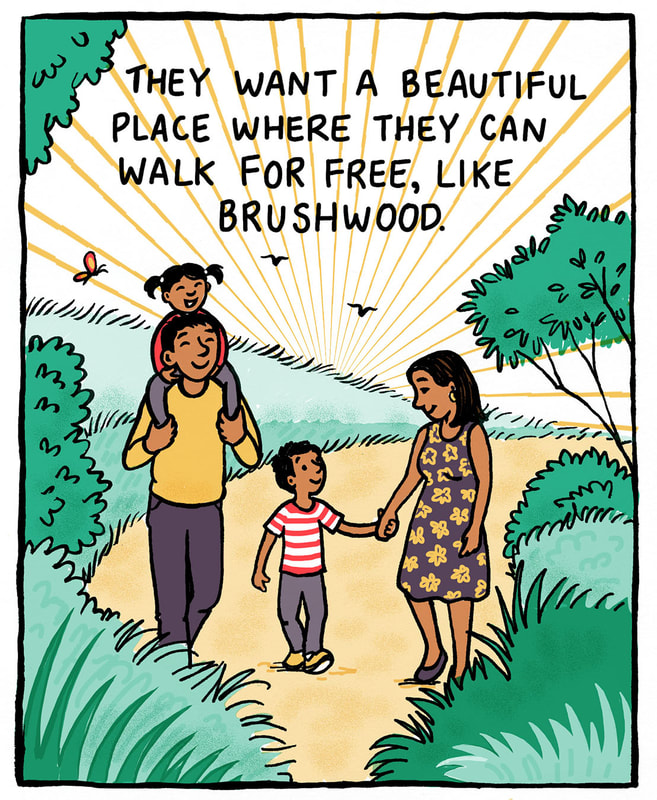
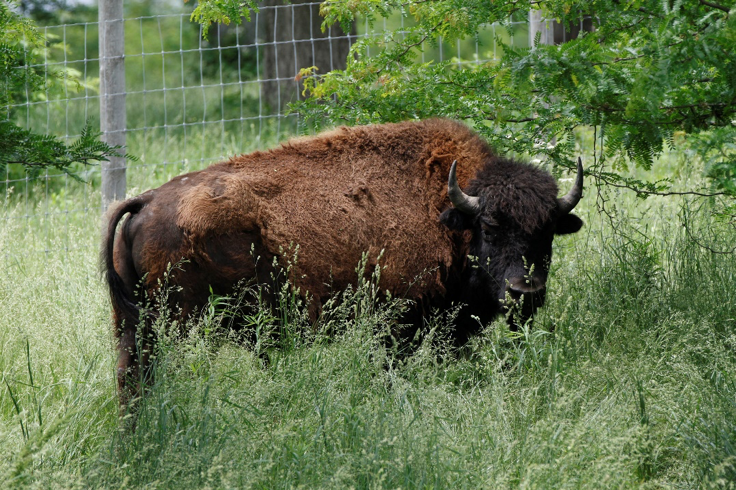
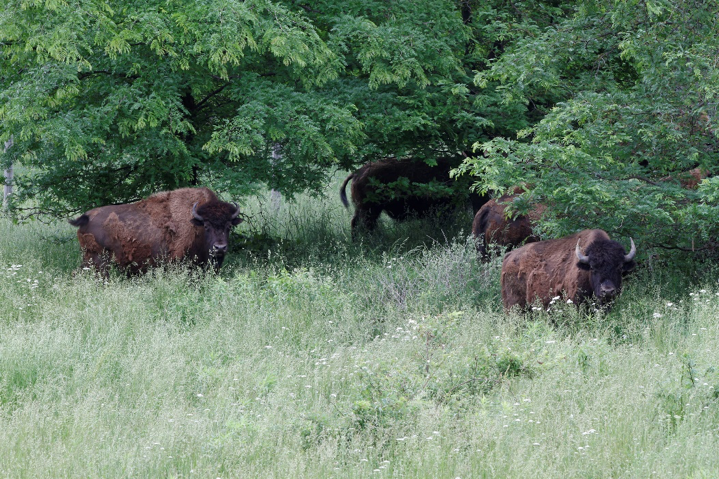


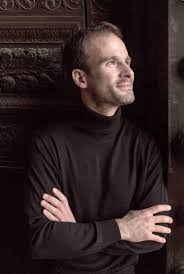



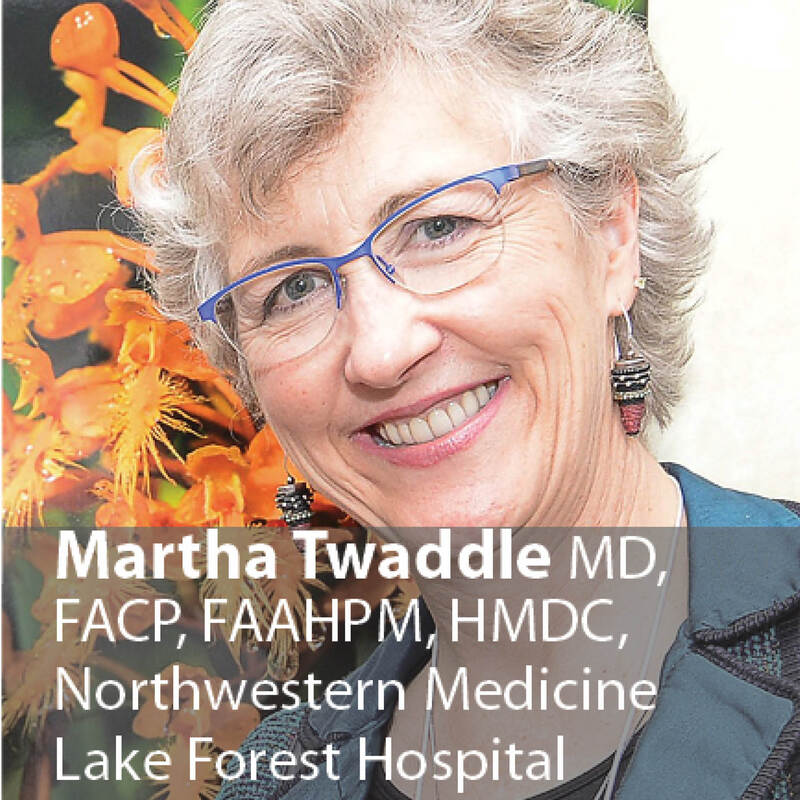


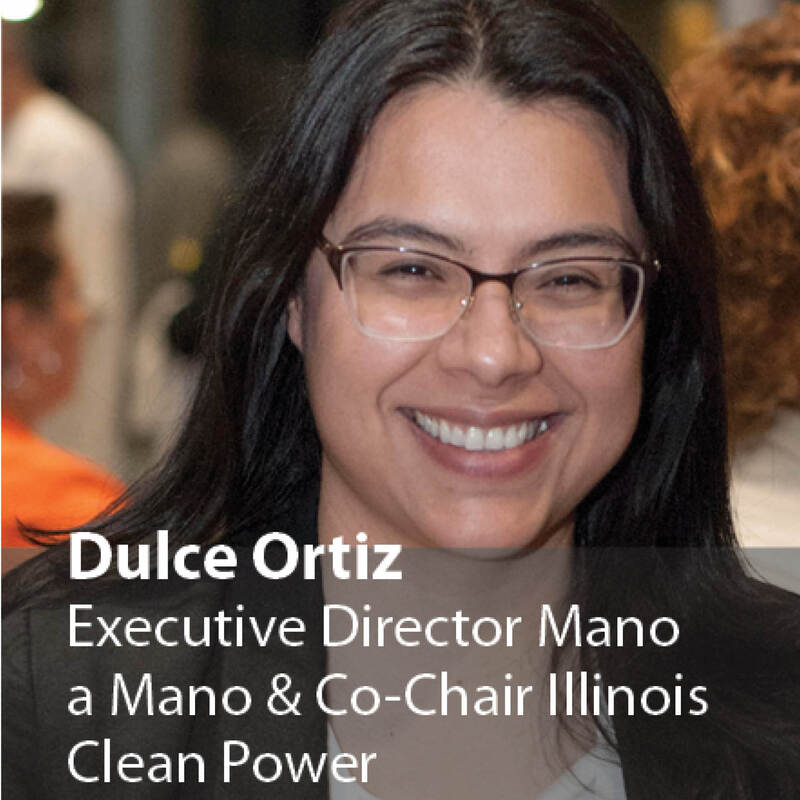

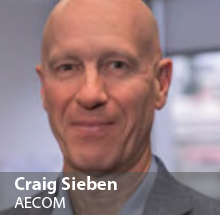


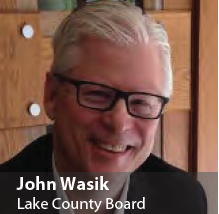
 RSS Feed
RSS Feed
